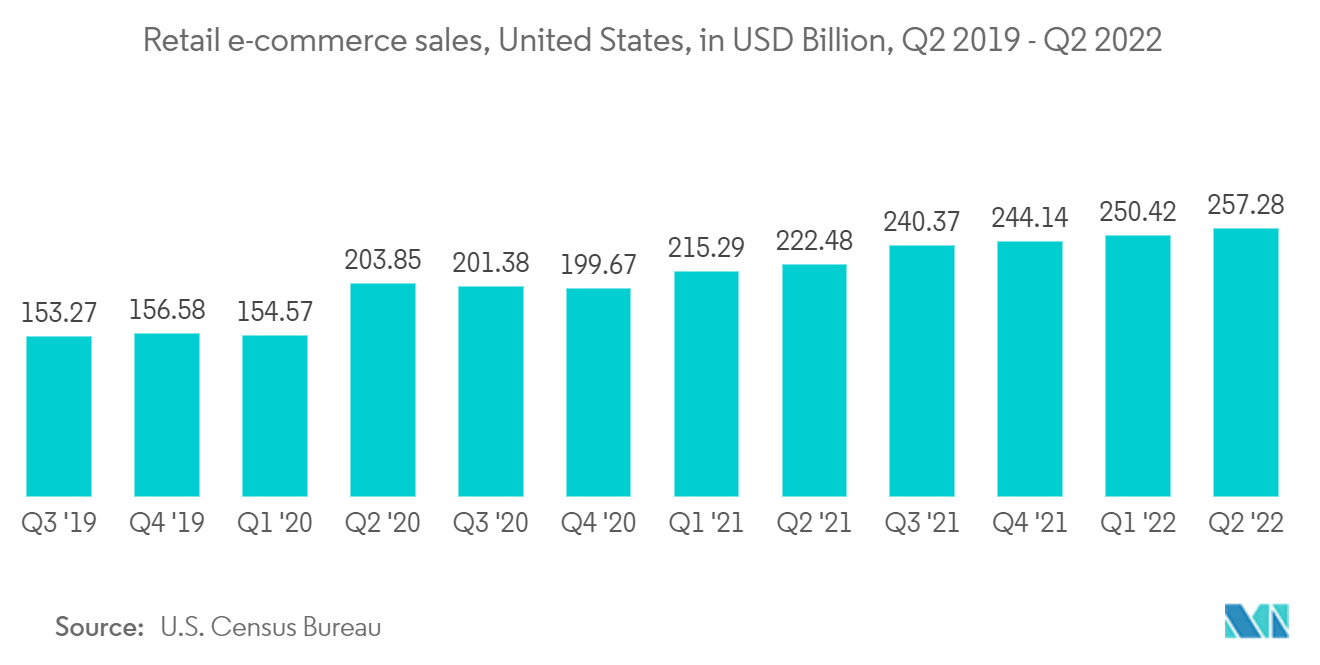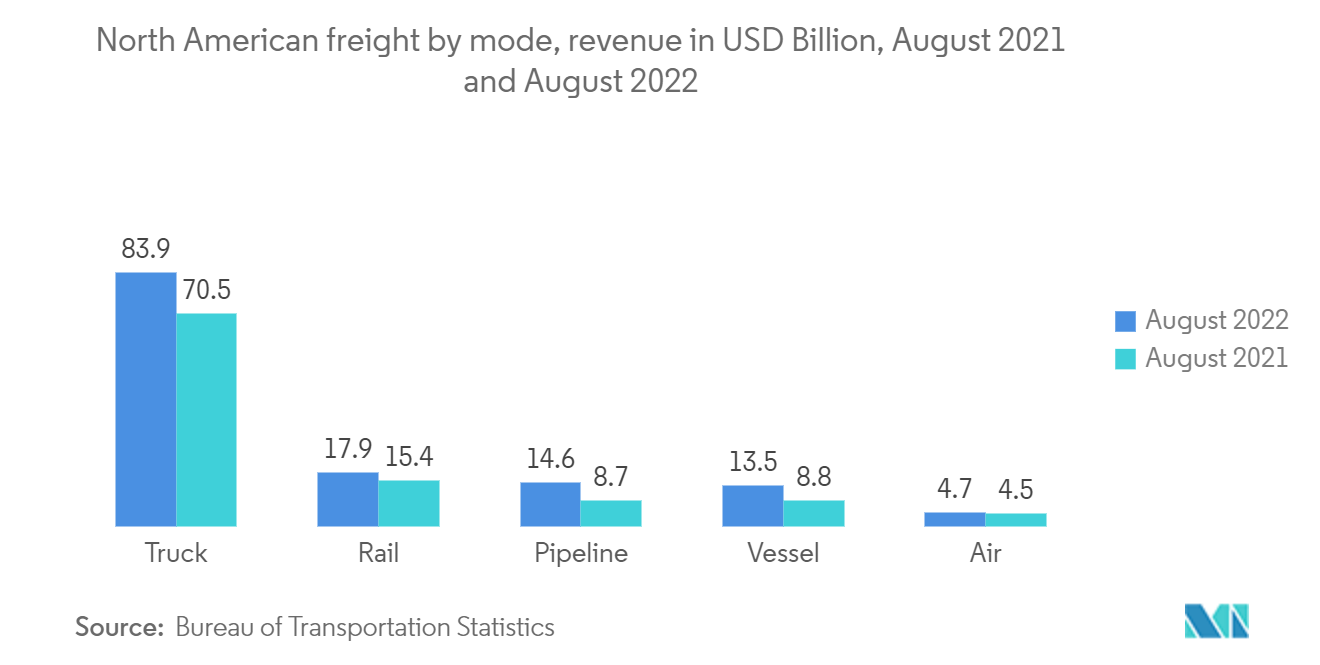Market Trends of United States Digital Freight Forwarding Industry
This section covers the major market trends shaping the US Digital Freight Forwarding Market according to our research experts:
E- Commerce is driving the market
In the first half of 2021, US retail e-commerce sales amounted to almost USD 438 billion. Sales revenue from April to June of 2021 exceeded USD 222 billion, up from USD 215 billion in the first quarter. Overall, retail e-commerce sales outdid the quarterly sales records registered in 2020. According to data from the US Department of Commerce, e-commerce sales have increased gradually for more than ten years, with a notable rise in the last two years. Total US e-commerce sales increased by 18.3% from USD 811.6 billion in 2020 to USD 959.9 billion in 2021.
According to a Digital Commerce 360 analysis of the US Department of Commerce data, following the 45%-50% increases during the first year of the pandemic, US e-commerce spending in Q2 2022 recorded its fourth consecutive quarter of single-digit growth. But for the first time since early 2021, the year-over-year increase in online sales also topped that of physical locations.
According to figures from the Commerce Department, digital revenue reached USD 252.14 billion in the second quarter, an increase of 7.3% from USD 234.89 billion for the same period in the previous year. This was less than half of the 15.4% US e-commerce growth in Q2 2021 and far less than the 53.4% increase that occurred amid lockdowns and store closings in Q2 2020.
Online customers expect order accuracy, same-day or same-hour delivery, and free returns. E-commerce companies are exploring ways to reduce order delivery times and operational costs. The e-commerce industry drives the demand for transparency, affordability, convenience, speed in delivery, and compelling frictionless returns. To cater to this need, it is essential to create new business models and solutions by digitalizing logistics operations and automating material handling systems, warehouse management systems, and distribution management systems. This has made fulfilment services speedier and more diverse, especially in terms of last-mile delivery alternatives and simple return procedures.

The Ocean freight segment showing significant growth
Innovation in the area of ocean freight is required. The market is starting to be filled by logistics technology companies. It is anticipated that e-commerce firms will transition to being 3PLs, and 3PLs will transition to become e-commerce companies, as the world wants things to be delivered as rapidly as Uber and Amazon can fulfill orders.
Once a product is imported into the United States, retailers and brands stop tracking it. More sellers accept inventory orders as soon as it ships at the port of origin, thanks to the Amazon effect and the warehouse pull-through it generates, which emphasizes total cycle times. This transforms ocean containers into the modern and future-day equivalent of warehouses, increasing consumer and supply chain experts' awareness of maritime freight.`
The majority of sectors are undergoing digital transformations, and freight forwarding is no exception. Technology is used by digital freight forwarders to plan and manage cargo transit. According to Freightos Baltic Index, the price to transport a 40-foot container from China to the US West Coast is currently around $5,400 per box, down 60% from January 2022.
Currently, the cost of shipping a container to Europe from Asia is $9,000, which is roughly 42% less than what was seen in early 2022. The rate for both routes peaked in September 2021 at more than $20,000, above pre-pandemic values.
Walmart and other large retailers in 2022 ended up with excess inventory as a result of almost rushing to import their products earlier than normal in anticipation of shipping delays and demand that ultimately did not materialize.


